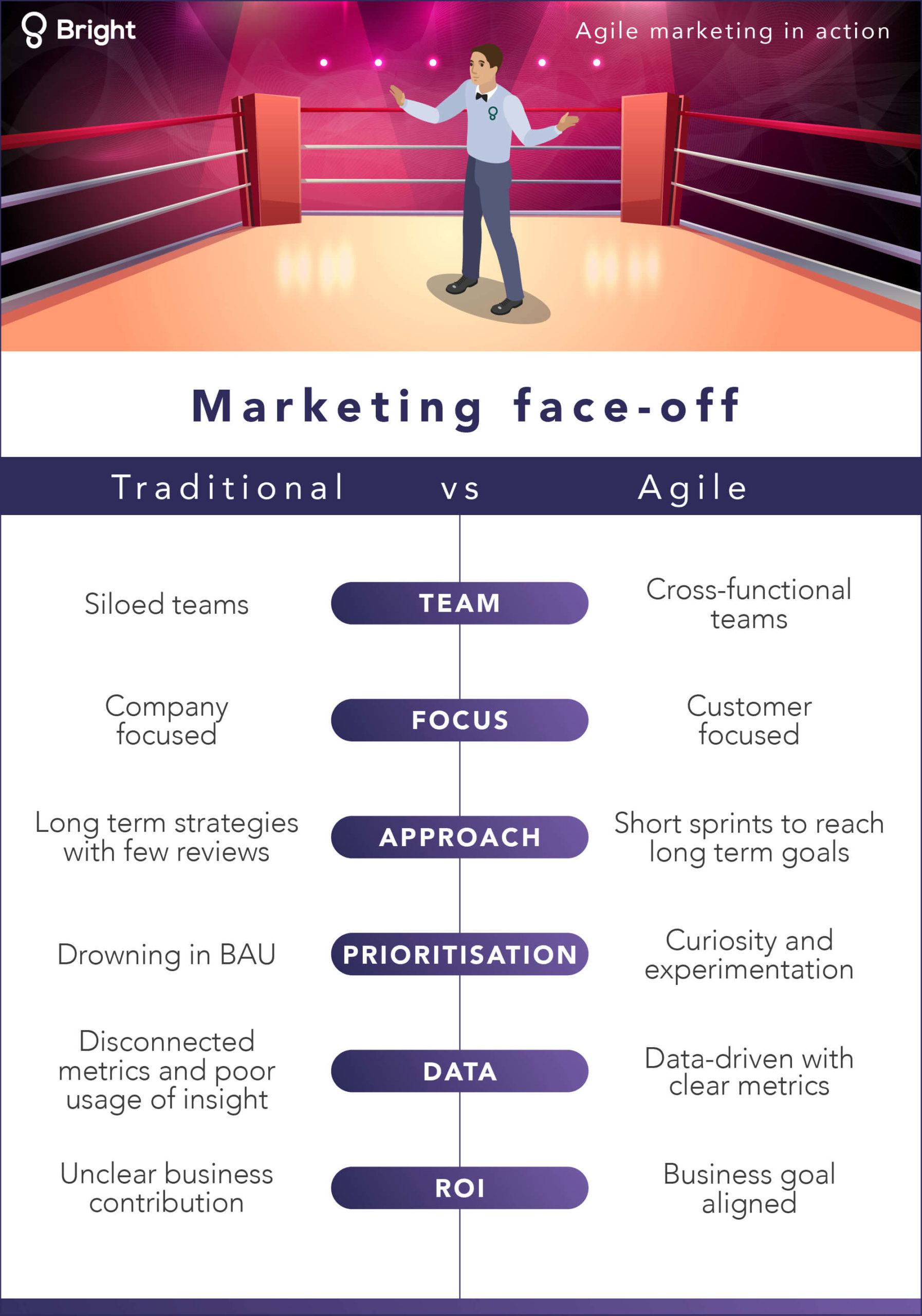The latest in the Bright agile marketing in action webinar series went live on 23 June 2020 and it was a hit! We brought together the best and brightest in strategic marketing to explore what it takes to create ground-breaking virtual events. Joining us for a discussions were CMO, Ghassan Sultan and Marketing Project Manager, Lisa Granton, key players at TECHNIA, one of our top clients. Together, we explored how they managed to smash their 1,000-attendee target at the recent PLMIF 2020 event. So, what’s the critical success factors for creating a virtual event that scores leads and builds your brand?
Agile marketing powers virtual events
Our webinar poll discovered that 96% of organisations have moved their events online. The global work culture has changed in response to Covid-19 and it’s not just a temporary fix. Your next event will be online, but it has to stand out from the crowd. To do this effectively, your event must capture the needs and goals of your audience and provide the tools and information they need to readily adapt and keep pace in a changing market.
So, where to start?
Embrace agile marketing
As the Bright team discussed in our webinar:
“Marketers need the ability to adapt, move at pace and be resilient to changing markets and organisation dynamics – this has been critical during Covid-19 and will continue to be relevant as we prepare for Brexit,”
In short, agile marketing is the common-sense approach to optimising what you have and experimenting with new tactics, tools, messaging and channels to reach your campaign KPIs.
When creating virtual events, an agile way of working allows you to bring together a cross-functional team to test, learn and continually improve your strategies, messaging and tactics throughout the event lifecycle – driving engagement and leads before, during and after your live event. Using valuable data insights to understand what works for your audience and what doesn’t, giving you the power to create an event that makes a lasting impact and builds your reputation in your industry.
The TECHNIA success story
TECHNIA came to Bright with a bold vision. They wanted to change the way events were delivered, capitalise on high-value content and reach a global audience. Ghassan walked us through TECHNIA’s goal to transform how they host events and attract a large audience. What started as a costly physical event turned into an ambitious vision for an innovative knowledge-sharing virtual event.
Ghassan’s vision for TECHNIA’s PMLIF 2020:
- Target 1,000 global attendees
- Capitalise on existing digital content and try new channels
- Be 100% sustainable in line with TECHNIA’s #GoExplore movement
- Cut time and budget from £100,000 in 4-8 months to £10,000 in 4-8 weeks
It was clear that such a brilliant event demanded extraordinary KPIs. Always ready for a challenge, Bright jumped at the opportunity to engage and drive leads from global tech leaders throughout the event lifecycle. We helped create a multi-channel marketing strategy, delivering key messaging for different target audiences through different media across the three-month campaign.
“Transitioning from physical to virtual really takes effort and your team is vital to success,” said Ghassan. “Bright’s agile marketing approach seamlessly integrated with our team. Thanks to the regular stand-ups and strong data insights, we were able to quickly change tactics to reach 2,000 attendees – an incredible success!”
Critical success factors to creating a compelling event:
- Setting clear, strong KPIs
- Testing and iterating messaging
- Providing quality on-demand content
TECHNIA’s marketing manager, Lisa Granton, also highlighted the power of data-driven decision making and communication to drive success:
“Throughout the agile marketing process, we received constant feedback on what was working and what wasn’t, and the Bright team responded with great energy to perfect our messaging. We were able to keep developing and improving throughout our campaign.”
For more details, see our TECHNIA Virtual event success case study
What is the future of TECHNIA events?
Agile marketing is a different way of working and we have seen its tremendous power to transform teams and encourage cultural change. After the success of the PLMIF 2020 virtual event, TECHNIA noticed a dramatic change in their ways of working and how they approach creating future virtual events. “We found we were less focused on large, far-reaching strategies and more focused on starting small – setting short-termed goals and daily tasks to effectively reach our long term, big KPIs.” It’s safe to say the next PMLIF event will be crafted with agile marketing.
According to Ghassan, PLMIF2020 will also be hybrid. Taking the lessons they’ve learnt on how to deliver a successful event, they’re planning to create a roadshow of small, local physical events followed by a large global virtual event.
Learnings from the webinar Q&A
How do you engage sponsors?
Create sponsorship opportunities, tailored to your partners and get them to help promote the event. TECHNIA saw wave after wave of partners getting involved in promotion and Bright provided a toolkit of engaging messaging for easy promotion by partners.
How do you nurture leads?
Divide your team into two, focussing one on attracting leads and hitting your target with high-level messaging, and the other on nurturing leads through email, LinkedIn and other keep warm tactics.
How do you evaluate what platform works best to support a large virtual event?
Pinpoint your goals – do you want to make your virtual event look and feel like a physical conference with booths and networking opportunities? Or do you simply want to share knowledge and create dialogue with your audience? Once you’ve shortlisted your options, speak to reference clients and leverage their experience with the different platforms to make your choice.
You also have the option of building your own platform! If like TECHNIA, you know what you want and you have the skills and resources, build a platform that suits your needs.
How do you drive people to attend the live event on the day and not the on-demand?
TECHNIA advertised that they would be sharing content during the live event that hadn’t been viewed or discussed before. Combined with the multi-channel campaign we ran and Bright also provided a toolkit of eye-catching comms to help the TECHNIA sales team invite attendees to their virtual booths.
Where can I find additional resources?
Have a read through our top tips for creating a stand-out virtual event:
- 5 tips for a successful webinar
- When’s the best time for holding a virtual event?
- Transforming events at pace
Want to learn more? Watch the full event today, on-demand for viewing at your leisure. And if you’d like to have your say in the conversation on agile marketing or virtual events, join our Agile Marketing Club Meet Up group. See you there!





